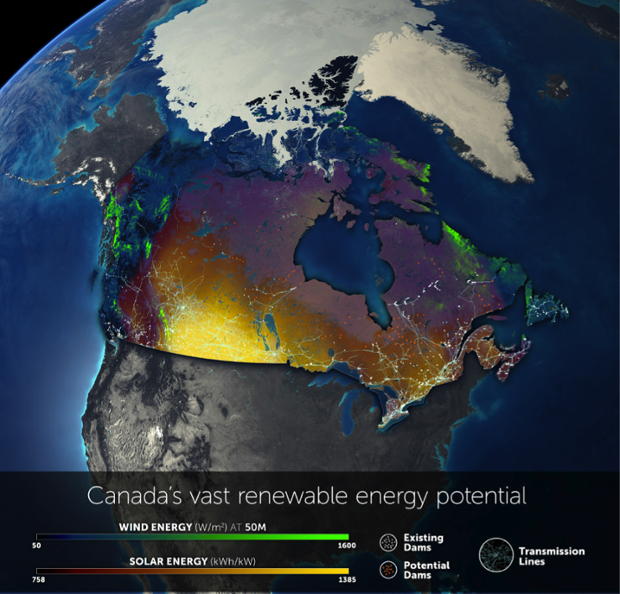Price on carbon key to Canada tackling global warming, say researchers
Posted on 15 April 2015 by dana1981
65 researchers from provinces across Canada have published a report, Acting on Climate Change, that details how the country can successfully decarbonize its electric grid to slow global warming.

Map of researchers contributing to the Acting on Climate Change report.
The team unanimously endorsed putting a price on carbon pollution as a key strategy. Without a carbon fee, the price of electricity on the market doesn’t reflect its true costs to society. This is a market failure that economists call an “externality,” where the costs associated with a product (in this case, damages incurred via climate change) aren’t captured in its market price. Instead they’re paid by taxpayers in what could be considered a massive subsidy to the fossil fuel industry.
Most economists support putting a price on carbon pollution in order to correct this market failure. Acting on Climate Change notes that this could be accomplished with either a carbon tax or cap and trade system. So far, the province of British Columbia has implemented a highly popular and successful revenue-neutral carbon tax, while the province of Québec has adopted a cap and trade system in coordination with California as part of the Western Climate Initiative, and Ontario has just announced that it will also implement a carbon cap and trade system.
In addition to carbon pricing, some other key policies suggested in the report include,
- Integrate the oil and gas production sector in climate policies
- Include aggressive goals for low-carbon electricity production in federal and provincial climate action plans
- Adopt a multi-level energy policy with energy efficiency and cooperation in electrification at its core
- Throughout Canada, rapidly adopt low-carbon transportation strategies
- Support fisheries, forestry and agriculture practices offering opportunities to limit greenhouse gas emissions, enhance carbon sequestration, and protect biological diversity and water quality
For example, the report notes that Canada has substantial renewable energy resources at its disposal. To date, 10.8% of its energy is supplied by hydroelectricity, 5.8% from renewables, and 9.1% from nuclear power. From the fossil fuel sector, 30.8% is supplied by natural gas, 36.4% from oil, and 7.1% from coal. It says:
With vast, already installed hydropower capacity and rich potential in undeveloped renewable energy sources that could be harnessed to produce electricity, Canada could rapidly move away from fossil fuels in the electricity sector. This transformation, which would put Canada at the forefront of green electricity internationally, could also provide significant cost-savings and give leverage to a number of Canadian industrial sectors.
 Renewable energy potential in Canada. Source: Acting on Climate Change.
Renewable energy potential in Canada. Source: Acting on Climate Change.
However, by exploiting its renewable energy resources, Canada could shift to a more low-carbon energy mix relatively quickly. Along with the other policy suggestions made in Acting on Climate Change, Canada could keep up with the carbon pollution cuts and pledges made by its neighbor to the south.
Because renewable energy resources are plentiful, we believe that Canada could reach 100% reliance on low carbon electricity by 2035. This makes it possible, in turn, to adopt a long-term target of at least 80% reduction in emissions by the middle of the century, consistent with Canada’s international climate mitigation responsibility. In the short-term, we think Canada, in keeping with its historical position of aligning with United States’ targets, could adopt a 2025 target of 26-28% GES reductions relative to our 2005 levels.































 Arguments
Arguments






























Comments